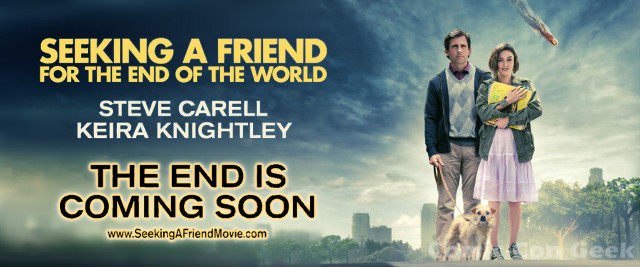
Opinion | A Giant Volcano Could End Human Life on Earth as We Know It (Published 2019)
Why isn’t anyone taking this problem more seriously? Unlikely isn’t the same thing as impossible, even though it’s human nature to conflate the two.
A Giant Volcano Could End Human Life on Earth as We Know It
Why isn’t anyone taking this problem more seriously? Unlikely isn’t the same thing as impossible, even though it’s human nature to conflate the two.
If you’re planning to visit Yellowstone National Park this Labor Day weekend, I have good news: It is very, very, very unlikely that the supervolcano beneath it will erupt while you’re there.
The Yellowstone supervolcano — an 8 out of 8 on the Volcanic Explosivity Index — has erupted three times over the past 2.1 million years, most recently 640,000 years ago. A Yellowstone eruption would be like nothing humanity has ever experienced.
First would come increasingly intense earthquakes, a sign that magma beneath Yellowstone was rushing toward the surface. Then magma would burst through the ground in a titanic eruption, discharging the toxic innards of the earth to the air. It would continue for days, burying Yellowstone in lava within a 40-mile radius.
A bad day at the park. But the devastation around Yellowstone would be just the beginning. Volcanologists believe a Yellowstone supereruption would bury large swaths of Colorado, Wyoming and Utah in up to three feet of toxic volcanic ash. Depending on the weather patterns, much of the Midwest would receive a few inches, too, plunging the region into darkness. Even the coasts — where a majority of Americans live — would most likely see a dusting as the ash cloud spread. Crops would be destroyed; pastureland would be contaminated. Power lines and electrical transformers would be ruined, potentially knocking out much of the grid.
That’s just the United States. Modeling by meteorologists has found that the aerosols released could spread globally if the eruption occurred during the summer. Over the short term, as the toxic cloud blocked sunlight, global average temperatures could plunge significantly — and not return to normal for several years. Rainfall would decline sharply. That might be enough to trigger a die-off of tropical rain forests. Farming could collapse, beginning with the Midwest. It would be, as a group of researchers wrote in a 2015 report on extreme geohazards for the European Science Foundation, “the greatest catastrophe since the dawn of civilization.”
Supervolcanoes like Yellowstone represent what are known as existential risks — ultra-catastrophes that could lead to global devastation, even human extinction. They can be natural, like supereruptions or a major asteroid impact of the scale that helped kill off the dinosaurs, or they can be human-made, like nuclear war or an engineered virus. They are, by definition, worse than the worst things humanity has ever experienced. What they are not, however, is common — and that presents a major psychological and political challenge.
Though asteroids get the press and the Michael Bay movies, existential risk experts largely agree that supervolcanoes — of which there are 20 scattered around the planet — are the natural threat that poses the highest probability of human extinction. But that’s not the same thing as high. The probability of a supereruption at Yellowstone in any given year is 1 in 730,000.
But extremely unlikely isn’t the same thing as impossible, even though it’s human nature to conflate the two. What sets existential risks apart from everyday dangers isn’t likelihood but consequence.
Let’s say, as scientists have modeled, that a supereruption might kill 10 percent of the global population. Even if such eruptions occur roughly every 714,000 years — the low end of the frequency range — the death toll of that catastrophe equates to the expected loss of over 1,000 people annually, averaged out between now and when that supervolcano finally blows. If they occur roughly every 45,000 years — the high end of the range — that annual expected death toll jumps to some 17,000.
A bit of comparison helps here. Aviation accidents around the world caused 556 deaths in 2018. The Federal Aviation Administration alone spends more than $7 billion a year on aviation safety. Yet the United States spends only about $22 million annually on its volcano hazard programs — even though supervolcanoes, viewed over the longest of the long term, will kill far more people than plane crashes.
The difference, of course, is that aviation poses a risk that is relatively constant and known. There will probably never be a year in which no one dies in an aviation accident, but there will definitely never be a year in which 10 percent of the global population dies in a single plane crash. Yet that could happen with a supervolcano, an asteroid strike or a nuclear war.
We can reduce these existential risks. NASA has budgeted $150 million a year on planetary defense and could invest in space-based telescopes that might catch the asteroids we’re missing now. It would cost about $370 million a year to bring the rest of the world up to the same level of volcanic monitoring that the United States has, which would lessen the chance of being surprised by a supereruption and thus reduce the potential death toll. Human-made existential risks like nuclear war or even artificial intelligence are, of course, well within our ability to prevent. Our species faces greater existential peril than we ever have before, but unlike through most of our existence, we now have the ability to protect ourselves.
What has happened before can and will happen again, eventually — but because we remain confined to the brief human time horizons of our own experience, we treat them as unreal. In doing so, we leave ourselves vulnerable to what we can’t imagine.

